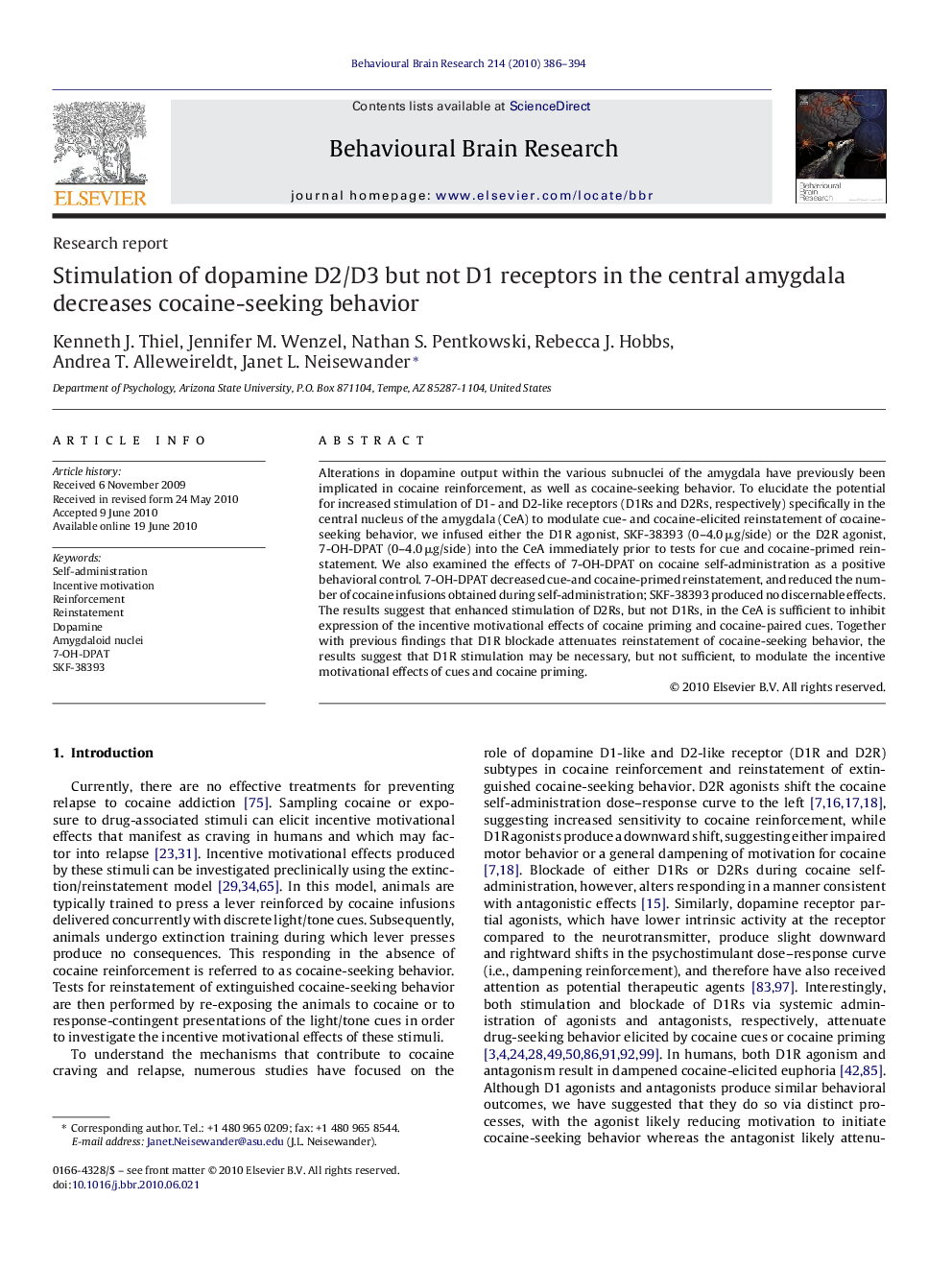| Article ID | Journal | Published Year | Pages | File Type |
|---|---|---|---|---|
| 4314138 | Behavioural Brain Research | 2010 | 9 Pages |
Alterations in dopamine output within the various subnuclei of the amygdala have previously been implicated in cocaine reinforcement, as well as cocaine-seeking behavior. To elucidate the potential for increased stimulation of D1- and D2-like receptors (D1Rs and D2Rs, respectively) specifically in the central nucleus of the amygdala (CeA) to modulate cue- and cocaine-elicited reinstatement of cocaine-seeking behavior, we infused either the D1R agonist, SKF-38393 (0–4.0 μg/side) or the D2R agonist, 7-OH-DPAT (0–4.0 μg/side) into the CeA immediately prior to tests for cue and cocaine-primed reinstatement. We also examined the effects of 7-OH-DPAT on cocaine self-administration as a positive behavioral control. 7-OH-DPAT decreased cue-and cocaine-primed reinstatement, and reduced the number of cocaine infusions obtained during self-administration; SKF-38393 produced no discernable effects. The results suggest that enhanced stimulation of D2Rs, but not D1Rs, in the CeA is sufficient to inhibit expression of the incentive motivational effects of cocaine priming and cocaine-paired cues. Together with previous findings that D1R blockade attenuates reinstatement of cocaine-seeking behavior, the results suggest that D1R stimulation may be necessary, but not sufficient, to modulate the incentive motivational effects of cues and cocaine priming.
Research highlights▶ Dopamine in the central amygdala (CeA) regulates cocaine-seeking behavior. ▶ Intra-CeA D1 receptor stimulation, via SKF-38393, does not affect reinstatement. ▶ Intra-CeA D2 receptor stimulation, via 7-OH-DPAT, decreases cue & cocaine reinstatement.
